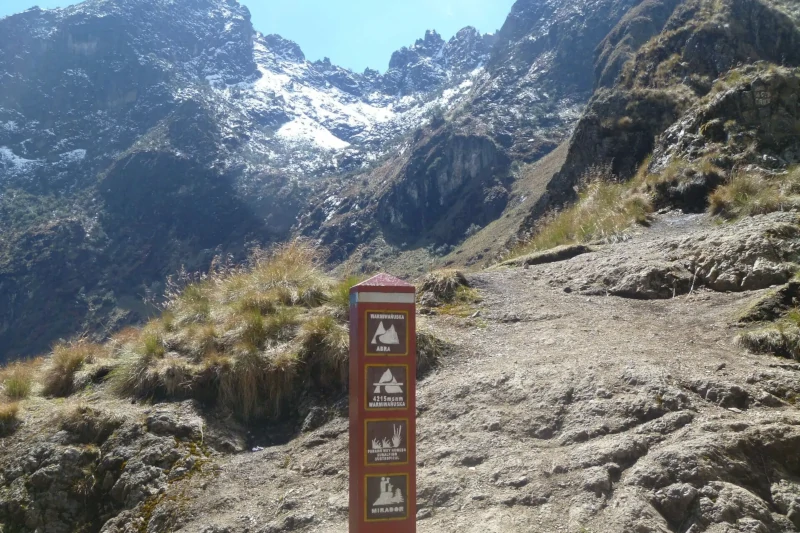Dead Woman’s Pass, or Warmiwañusca in Quechua, is a prominent landmark on the famous Inca Trail in Peru. This pass marks the highest point of the trail. It is widely considered one of the toughest sections of the journey. Despite the challenges, many hikers flock to the Dead Woman’s Pass each year, eager to experience the breathtaking views and rich history of the region.
Why is the Dead Woman’s Pass so famous?
The Dead Woman’s Pass stands at an elevation of 4,215 meters above sea level. It is a test of both physical and mental endurance. The steep climb requires hikers to traverse steep steps. This can be difficult for those not acclimated to high altitude. The effort required to reach the summit is worth it. However, hikers are rewarded with breathtaking views of the surrounding mountains and valleys.
The Inca Trail to Machu Picchu is one of the most popular trekking destinations in the world. It attracts thousands of visitors each year. The trail winds its way through the Andes Mountains, passing by several important Inca ruins and offering a glimpse into the rich history of the region. This mountain pass is considered one of the highlights of the journey. It is a must-visit for any hiker looking to experience the best of what the Inca Trail has to offer.

To prepare for the Dead Woman’s Pass, it is important to plan ahead and be in good physical shape. Hikers should acclimate themselves to the high altitude by spending time in the region before beginning the trek. It is also important to bring plenty of water, food, and appropriate gear, as well as to pace oneself and listen to one’s body during the ascent. With the right preparation and mindset, however, this mountain pass can be a truly rewarding experience.
The Dead Woman’s Pass is not only a challenging physical feat, but also a cultural and historical marvel. The Inca Trail was once a vital trade and pilgrimage route. It connected Cusco to Machu Picchu and other important sites in the region. As one of the most difficult sections of the trail, this mountain pass symbolizes the incredible engineering and construction skills of the Inca civilization.
Some tips before visiting this mountain pass
However, it is important to keep in mind that the Dead Woman’s Pass is not for everyone. Hiking to such high altitudes can be dangerous for those with certain medical conditions, such as heart problems or altitude sickness. It is essential to consult with a doctor before attempting the trek and to listen to one’s body throughout the journey. It is also crucial to follow all trail regulations and guidelines, including obtaining the necessary permits and hiring a licensed guide.
Another important factor to consider when trekking to Dead Woman’s Pass is to respect the local environment and indigenous communities. The Inca Trail and surrounding regions are home to a diverse array of flora and fauna, and it is crucial to minimize the impact of tourism on the environment. This includes practicing Leave No Trace principles, such as packing out all waste and respecting wildlife and cultural sites.

Despite the challenges, this mountain pass remains a popular destination for hikers and trekkers from around the world. The combination of breathtaking scenery, rich history, and physical challenge make it a unique and unforgettable experience. Whether you are an experienced hiker or a first-time trekker, the Dead Woman’s Pass on the Inca Trail is a must-visit destination for anyone looking to explore the beauty and wonder of the Andes Mountains.
Explore the Inca Trail with Peru Ancestral
The Dead Woman’s Pass on the Inca Trail is a challenging and rewarding experience that should not be missed. From the breathtaking views to the rich history and cultural significance, the Dead Woman’s Pass is a unique and unforgettable destination for hikers of all levels. With proper preparation, respect for the environment and local communities, and a commitment to safety, anyone can conquer the Dead Woman’s Pass and experience the beauty and wonder of the Andes Mountains.
Check our most popular tours to the Cusco region:
- Machu Picchu Full Day
- Humantay Lake
- Rainbow Mountain (Vinicunca)
- Short Inca Trail
- Sacred Valley + Maras Moray









 Hi, how can I help?
Hi, how can I help? 